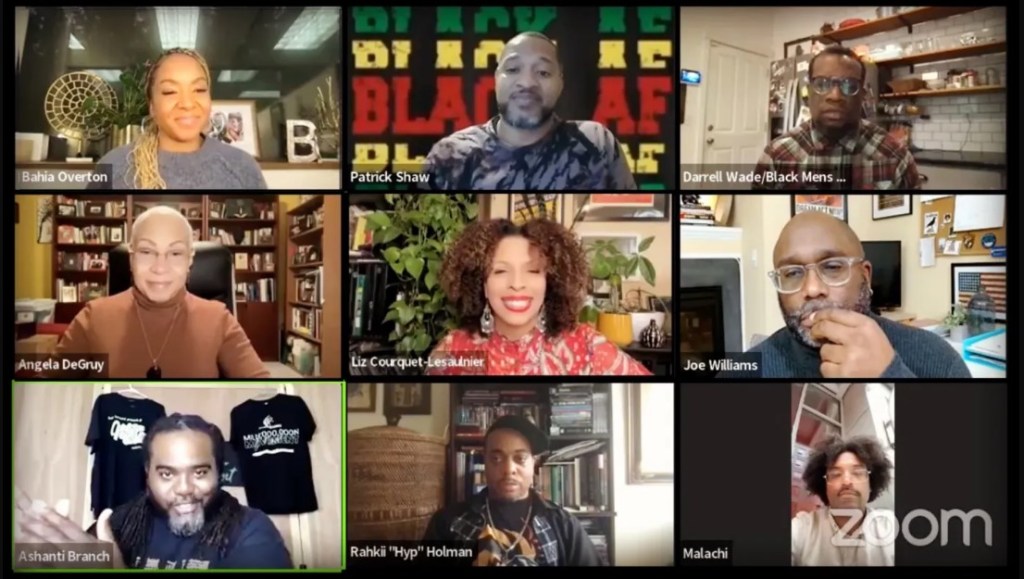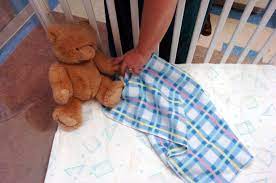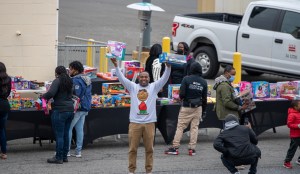By Joseph Williams,
Word In Black
It happens for Darrell Wade when he goes hiking in green spaces in and around Portland, Oregon, remembering to breathe. For Dr. Joy DeGruy, an internationally renowned researcher and educator and the founder of the Be The Healing movement, it can be spontaneous, like when other Black people “see” her and interact — especially if both of them are navigating mostly-White spaces.
And for Rahkii “Hyp” Holman, racial healing occurs when he gets to take off his mask in culturally Black spaces: the beauty shop, talking with people from the African diaspora in Ghana, or joining the circles he convenes with other Black men. Even if removing that mask can take a minute sometimes.
After all, “I’m still a Black dude who has to maneuver through the streets,” Holman said, recalling how a Black stylist chided him to say “hi” when he sees her in the salon. “I’m coming in from the world with my ‘ice grill’ on. And I have to remember to snap out of it.”
Those were some of the answers to the question about racial healing in real time during “Wellness Wednesday,” a livestream hosted by Dr. DeGruy and Dr. Bahia (Cross) Overton, executive director of Black Parent Initiative The organization’s mission is to “educate and mobilize” parents of Black children to become better caregivers and push back against systemic racism affecting their children.
Joining the conversation with DeGruy, Overton,and Holman, was Ashanti Branch, founder and executive director of the Ever Forward Club, an organization uplifting troubled Black boys in public school; Patrick Shaw, founder and CEO of For Fathers, a support group for Black men; and Malachi Scott, who with Holman founded the Atunse Justice League, a group that supports Black men returning from incarceration. Wade, meanwhile, is the founder of Black Men’s Wellness, a grassroots organization that helps members address chronic health issues.
Also on the livestream was Liz Courquet-Lesaulnier, managing director for Word In Black. Courquet-Lesaulnier explained that the news collaborative founded by 10 leading Black publishers is completing a months-long series examining how artists, educators, activists, physicians, musicians, and others are helping themselves and their communities repair racial trauma.
The methods range from the ancient — Zee Clarke’s adaptation of venerable breathing techniques taught in India for thousands of years — to the futuristic, such as Dr. Fallon Wilson’s vision of a Black technology utopia. Many of the subjects featured in the series have adopted The W.K. Kellogg Foundation’s Truth, Racial Healing and Transformation curriculum.
While racial healing involves reconciling past injustices, Courquet-Lesaulnier said the vignettes appearing in Word In Black are focused on amplifying solutions as well as transforming the pain of racism to hope and joy. And It places Black people as the subject of the experience.
“When we think about racial healing, so often it is not framed through the lens of the healing of Black folk,” she said. “Obviously, White folks need to heal, but centering the experience of Black folks is not always what happens.”
Furthermore, “We need these models to encourage us to show us what is possible, and that things are happening,” Courquet-Lesalnier said. “Because this society will have you out here thinking, as you all know, it’s all doom and gloom, there is nothing good happening for us.”
On the Wellness Wednesday podcast, participants shared examples of what real-time racial healing looks like.
Branch, of the Ever Forward Club, shared that his Million Mask project — in which participants write the image they want to project to society on the outside of a paper mask but write their real feelings on the inside — can help young people express their feelings. Shaw, of For Fathers, said it happens when he gives Black men a safe space to explore their feelings and get to the root of their challenges dealing with their family. And Scott, who works with Holman at the Atunse Justice League, said the healing circles with other Black men — out in the open, in a public park — has the power to heal an entire community.
“That visibility was promoting healing of itself,” he said. “Black men and women used to walk by our circle and get interested in joining. We had circles where somebody just lost a loved one, and they wanted revenge. We were able to hold that and talk them down.”
Ultimately, the group agreed that racial healing programs and concepts have several commonalities. They usually involve individuals or groups changing racist narratives around Black people; engaging in self-care practices or routines; building or joining a community; and creating safe spaces for Black people to relax, decompress, and be themselves. But the practice has to be intentional, and it will take time.
Still, a growing number of people are thinking about racial healing, said Wade, the Black Men’s Wellness founder. And it’s coming from grassroots organizations.
“Whether it’s yoga retreats, or Black Men Heal on the East Coast, or Black Girls Ride, I think you’re seeing a ton of things like that,” he said. “It’s like the Harlem Renaissance. I think in that way, what we’re seeing is a renaissance in the space of Black wellness.”
This article was originally published by Word In Black.
The post Joy DeGruy and Bahia Cross Overton: Leading a racial healing renaissance appeared first on AFRO American Newspapers .












